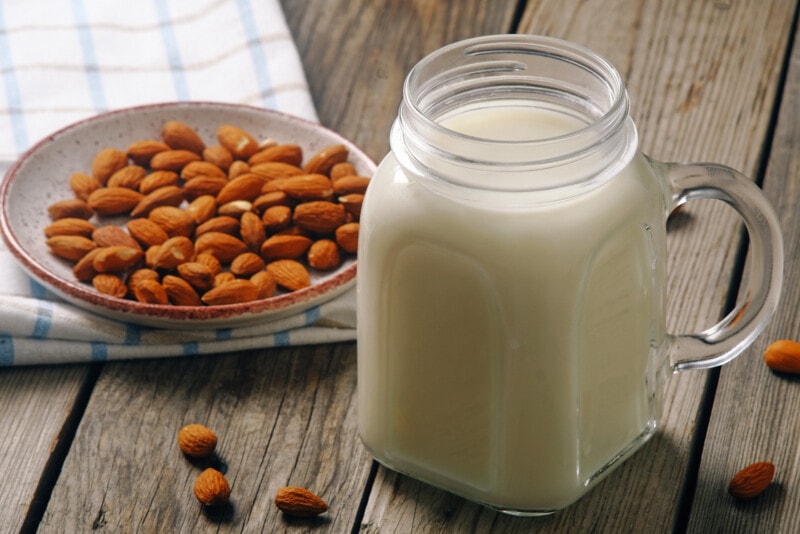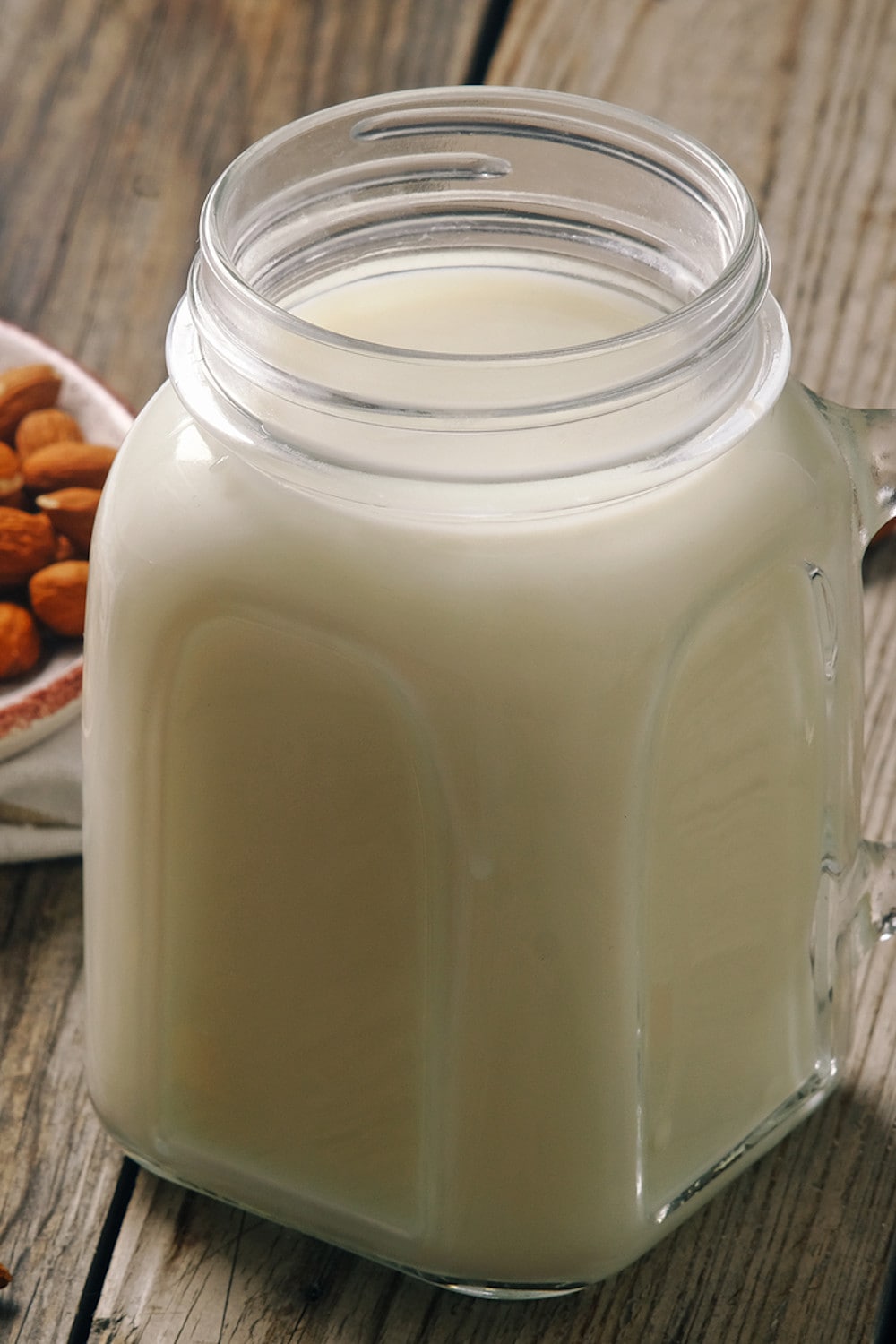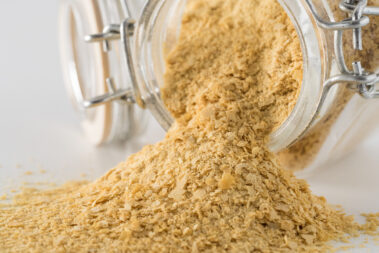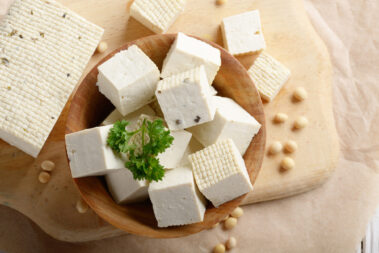Almond milk is easy to find, loaded with nutrients, and a great tasting alternative to dairy milk. But does almond milk go bad? Does it have the same storage requirements as dairy milk?
We’ll answer those questions and more in this article.
Table of Contents
Can Almond Milk Go Bad?
The short answer: yes, almond milk can go bad.
But how quickly and under what conditions depend on the type of almond milk you’re talking about.
Shelf-Stable Almond Milk
Shelf-stable almond milk is any type of almond milk that can be stored long-term in the pantry when unopened. In the grocery store, you’ll find this type of almond milk on the shelf along with dry goods.
Most often, shelf-stable almond milk comes in a Tetra Pak or similar type of aseptic packaging.
These specialty containers are made of paperboard on the outside and aluminum foil on the inside. This layered method prevents light, oxygen, and bacteria from contaminating the milk on the inside. Combined with sterile filling and sealing methods, this packaging allows almond milk to be stored at room temperature for extended periods.
This makes for a product with an extended shelf life.
Shelf-stable almond milk will stay good for up to a year if unopened.
Check the use-by date printed on the carton and be sure to use the product within a couple of weeks of that date for the freshest tasting almond milk.
Refrigerated Almond Milk
Any almond milk sold in the refrigerated section of the supermarket should be stored in the refrigerator when you get home. This kind of almond milk is not shelf-stable.
Refrigerated almond milk comes in a variety of different types of containers. The most common are paperboard, glass, and plastic.
When unopened, refrigerated almond milk will last until the expiration date printed on the label. Once opened, it should be used within 7 days.
Just like with dairy, you should check the use-by dates on the cartons while at the store. Choose the farthest out date to assure you’re getting the freshest product.
Homemade Almond Milk
Homemade almond milk needs to be used much quicker than store-bought varieties because you don’t get the added benefit of a “sealed period.” Basically, you “open” your homemade almond milk the day you make it.
It’s best to use homemade almond milk within 5 days of making it.
There are a few reasons homemade almond milk doesn’t last as long as store-bought. For one, homemade plant milks typically aren’t subjected to high heat, which means any bacteria on the almonds is present in the final product.
Additionally, blending plant milks at home introduces a large amount of oxygen into the liquid. Oxygen hastens the degradation process, which means the almond milk will spoil more quickly.
If you’d like to try making your own almond milk at home, don’t miss the recipe at the bottom of this page.
Does Almond Milk Go Bad If Not Refrigerated?
As you can guess from the section above, some almond milk does go bad if not refrigerated and some doesn’t.
Shelf-stable, unopened almond milk does not need to be refrigerated. But once it’s opened it does need to be stored in the fridge until it’s gone.
Homemade almond milk and milk that’s chilled at the grocery store must be refrigerated from the moment you get it home until it’s all used up, whether the container has been opened or not.
Now, we’ve all accidentally left food on the counter that we meant to put back in the fridge. If you leave your almond milk out at room temperature, it won’t immediately go bad. So long as the liquid is still fairly cool, you are probably okay to put the carton back in the fridge and use it later.
If the liquid has been left out long enough to warm up to room temperature, then you might have a problem. That’s because bacteria multiply much more rapidly in warmer environments.
If the carton is swollen with extra air or you hear air rush through the top when you open the container, it’s best to throw the milk out. Extra air in the container could mean that fermentation has started, which is a good indicator the milk has a high bacteria load in it.
If you don’t notice these signs and the milk smells fine, you are probably okay to pop it back in the fridge. But be sure to do a smell and taste test before each time you use it. Most likely, it won’t last as long as it would have since it was exposed to warmer temperatures.
How Long Does Almond Milk Last?
This depends on the type of almond milk you have on hand and whether or not it’s open.
This handy table is a great reference for determining how long your almond milk is likely to last.
| Type of Almond Milk | Common Container Types | Unopened | Opened |
| Shelf-Stable | Tetra-Pak/aseptic packaging | About 1 year | Up to 10 days (in fridge) |
| Refrigerated | Plastic, glass, or paperboard | 1 to 2 months | Up to 7 days (in fridge) |
| Homemade | Jar | N/A | About 5 days (in fridge) |
For store-bought almond milk, be sure to reference the expiration date when determining how long an unopened container will last.
Unopened shelf-stable almond milk is unlikely to go bad even after the best-by date so long as the package has not been damaged or heated. But the milk will start to taste stale once it has sat for too long.
Non-shelf-stable almond milk will go bad around the time of the expiration date even if it is an unopened carton and has been in the fridge the entire time.
How Do You Know If Almond Milk Is Expired?
Like dairy milk, almond milk is good at letting you know if it has gone bad.
The most notable sign will be a chunky look. This is different from natural separation which can occur with store-bought almond milk and is very common with homemade types.
If your almond milk looks chunky, give it a good shake. If the lumpiness goes away and it no longer looks separated, it is probably fine. If it still looks a little off after shaking, it has likely gone bad.
Smell and taste are more dead giveaways of spoiled milk. Rancid almond milk has a slightly sour taste and an acidic, sour smell. The smell and taste will be nowhere near as bad as rancid dairy milk, but you should still notice a difference compared to fresh almond milk.
Will Expired Almond Milk Hurt You?
Just like with traditional spoiled milk, bacteria are responsible for making almond milk go bad. If you drink expired almond milk, you’ll be consuming a large number of bad bacteria.
This can cause stomach upset, diarrhea, and vomiting. Very rancid almond milk can cause more severe food poisoning.
If you realize too late that your almond milk has gone bad, the most important thing you can do is stay hydrated. Vomiting and diarrhea, which are likely to result, will dry you out. Drinking Pedialyte or sports drinks can help support your kidneys as they cleanse your system.
While more likely with rancid dairy milk, severe food poisoning can result from drinking bad almond milk. If you are having trouble keeping liquids down, it’s a good idea to go to the hospital to get some help staying hydrated while you recover.
How to Make Almond Milk at Home
Whenever I can find almonds for a good price, I make my own almond milk! It’s incredibly easy and tastes as good as the store bought stuff with fewer strange ingredients. In fact, it really only has one – almonds. (And water, but that barely counts as an ingredient, right?)
To make about 3 cups of almond milk, you’ll need to start with about 2 cups of raw almonds. Soak them in a bowl of water for at least six hours (I usually just leave them overnight) until they are nice and fat looking.
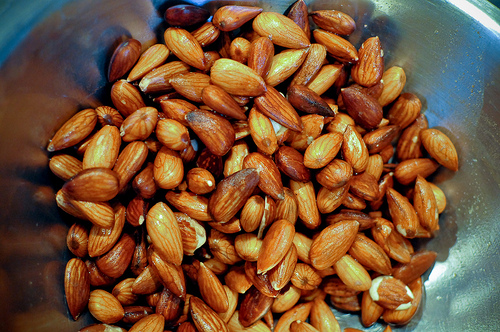
Your two cups of almonds should have plumped into three cups or so. Add 1 cup of almonds and 1.5 cups of water to your food processor (if you have a big processor you can do more than one cup of almonds at a time, but mine’s sort of small so I do it in batches) and blend for about 30 seconds. You’ll end up with a frothy, milky looking substance like so:

Pour it through a fine mesh strainer into a bowl or other container:
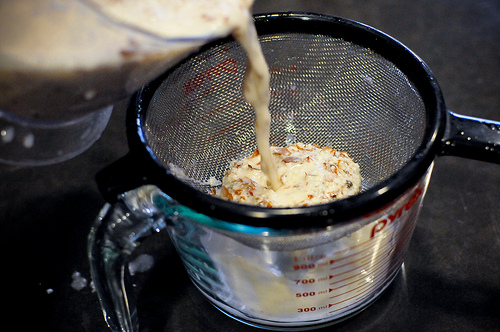
Then press any extra liquid out with the back of a spoon.

Try to squeeze it pretty well. Usually 1 cup of almonds and 1.5 cups of water leaves me with about a cup of “milk.” I then empty out the strainer and repeat the process with my remaining 2 cups of soaked almonds.
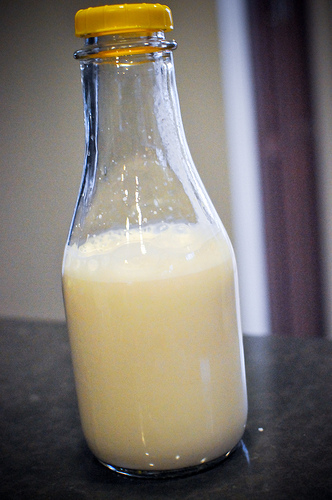
You can obviously make as much or as little as you’d like – it lasts about 5 days in the fridge. You can use this almond milk to replace milk in most recipes or anywhere you’d use commercial soy or almond milk. If you want to drink it straight you may want to add a bit of vanilla or a date into the blender when you blend it to make it have a little extra sweetness and flavor.
FAQ
Is it okay to drink expired almond milk?
Generally yes it’s okay to drink expired almond milk if it is within a few days of the expiration date and the milk looks and smells normal. But if there is any sign of spoilage or it is more than a few days past the expiration, it is safest to toss it.
What does rancid almond milk taste like?
Rancid almond milk will have a slightly sour, somewhat bitter taste. This will be noticeable compared to the normal neutral, slightly nutty flavor of plain almond milk but can be somewhat masked in sweetened or flavored milk.
Can spoiled almond milk make you sick?
Yes, spoiled almond milk can definitely make you sick. Almond milk is unlikely to harbor as many dangerous types of bacteria as spoiled dairy milk, but it can still cause upset stomach, vomiting, and diarrhea. In severe cases, you may need to be hospitalized.
The Bottom Line on Old Almond Milk
When it comes to almond milk going bad, it’s not a matter of “if” but “when.”
Unopened shelf-stable almond milk will stay good for up to a year while the refrigerator kind is only good for about a month. Once opened, though, almond milk should be used promptly, typically within a week.
If you just found out your almond milk has gone bad, don’t fret. We’ve got our printable homemade almond milk recipe below. As long as you have almonds handy, you can whip up some fresh almond milk anytime.
Have more “does it go bad” inquiries? Let us know by posting in the comments section below.
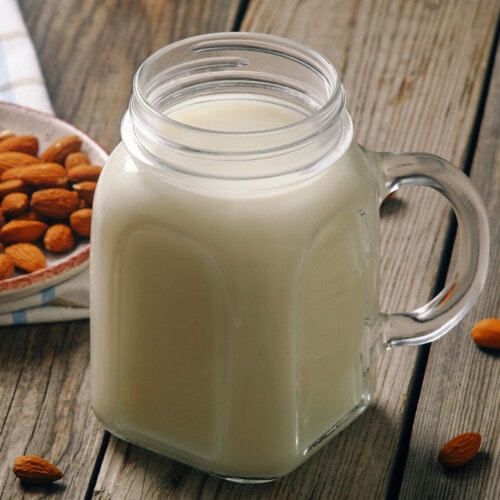
Homemade Almond Milk
Ingredients
- 2 cups almonds
- 4 ½ cups water
Instructions
- Soak raw almonds in a bowl of water for at least six hours or overnight until they soften and plump up. Your two cups of almonds should have plumped into three cups or so.
- Add 1 cup of almonds and 1.5 cups of water to your food processor and blend for about 30 seconds. Repeat the process in batches until you've processed all the almonds. You may not need to do this in batches if you have a large food processor.
- Pour the processed mixture through a fine mesh strainer and into a bowl or other container. Press any extra liquid through the strainer using the back of a spoon. One cup of almonds and 1.5 cups of water should leave you with about a cup of almond milk.
- Store in a container sealed with a lid and store in the refrigerator. Homemade almond milk will last for about 5 days.
Notes
- You can use almond milk to replace dairy milk in most recipes or anywhere you’d use commercial soy or almond milk.
- If you want to drink the almond milk straight, you may want to add a bit of vanilla or a date while blending to provide a little extra sweetness and flavor.
- Use the leftover almond pulp to make almond meal!
- How to Pick the Perfect Watermelon For a Sweet Summer Treat - April 10, 2024
- Future Kind’s Foundations: A Multivitamin Made for Vegans - December 5, 2023
- Does Nutritional Yeast Go Bad? - November 28, 2023

